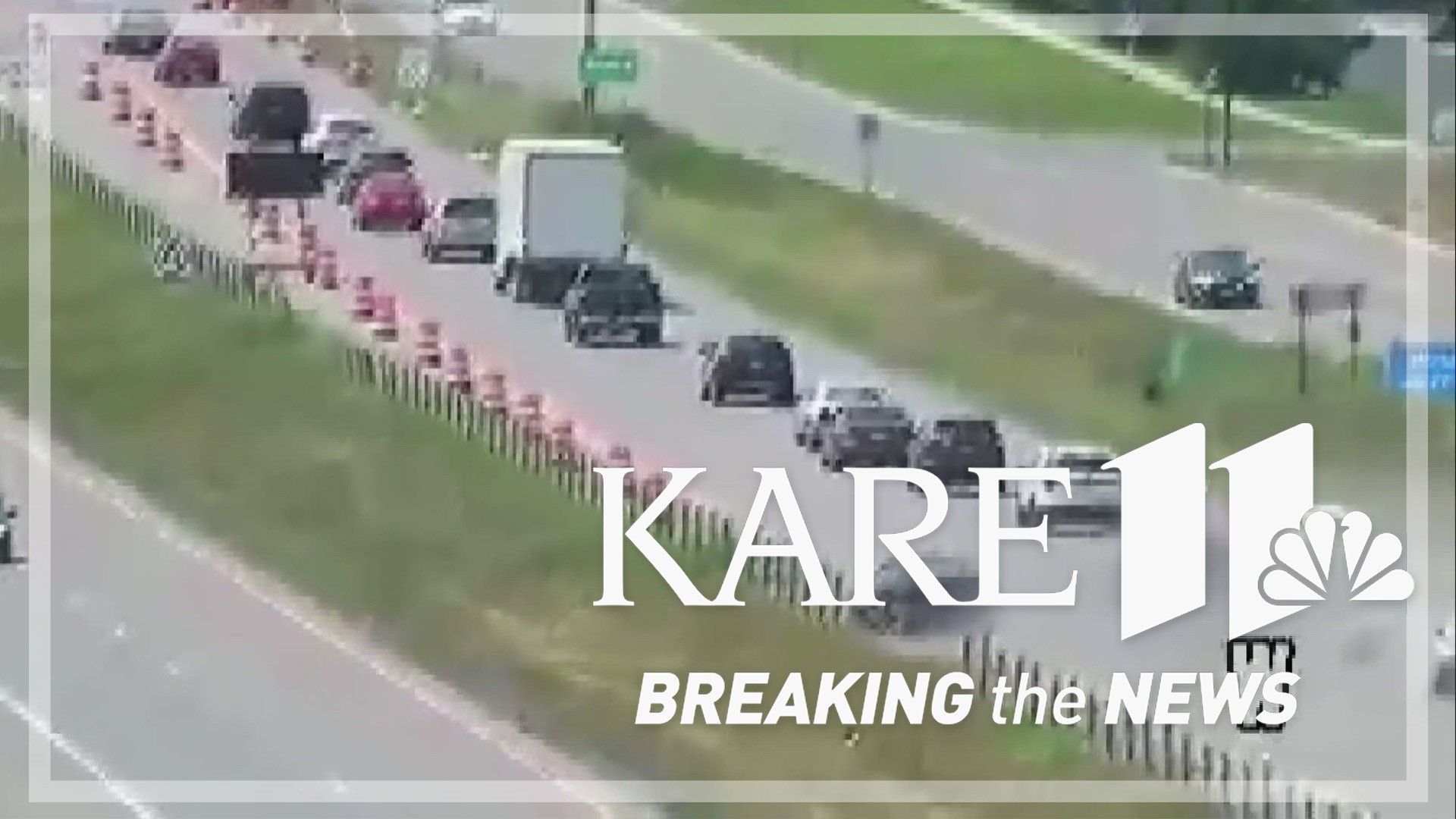MINNEAPOLIS — For more than a decade, the Minnesota Department of Transportation (MnDOT) has been working to educate Minnesota drivers about the benefits of the zipper merge, which is billed as a safer, faster way to navigate construction traffic.
But while it's the safest, and fastest traffic solution in theory, in reality, a crash in Coon Rapids on Monday — involving a car that seemed to be doing everything right — is prompting many to ask why Minnesota drivers seem to struggle with such a simple concept.
The zipper merge involves driving all the way to the end — or merge point — of a closed lane, before moving over in alternating fashion with cars in the nearest lane.
MnDOT has been researching the strategy for more than 20 years, and it launched a big promotional effort to educate Minnesotans about the zipper merge 12 years ago.
"We have found that utilizing all the space, both lanes, going into a work zone, to that merge point, really gets more traffic through that situation, and it's safer," said MnDOT spokesperson Anne Meyer. "We're reducing the length of that back up, so you're not blocking other exit ramps. Plus, you're reducing speeds on both sides, both lanes, so you don't have a very fast moving left lane, trying to move in quickly at greater speeds."
Despite that evidence, Meyer acknowledges that achieving those reduced speeds and smooth, faster merge also requires buy-in from drivers in both lanes.
"Everyone has to work together for the zipper merge to be successful and to be safe," she said.
Despite all of the efforts to spread the message across the state, and local media, it's unclear how many Minnesotans have actually changed their driving.
A MnDOT survey from 2010, before the zipper merge campaign, found that only about 20% of Minnesotans considered themselves zipper mergers. After the campaign a couple of years later, Meyer says the number rose to about 30-35%.
Kent Erdahl: "It does sound easy, but it has proven to be otherwise. Is it just because of the way that we're wired?"
Anne Meyer: "We're very Minnesota nice here in Minnesota, and so maybe folks think it's a little different or that they're getting around or going around a situation if they're utilizing that zipper merge, but that's not the case."
When NOT to zipper merge
While the zipper merge itself is a simple concept, Meyer says it's not always appropriate, and confusion over when and where to do it can also lead to confusion, frustration and danger.
In general, she says zipper merging should be limited to construction zones and other lanes that come to an end with a clear merge point.
She says it's not ideal in congested areas where lanes split into multiple ramps. Interstate 394 W as it splits into I-94 East and I-94 West in Minneapolis is a specific example.
"If you've got multiple lanes and each is going in a different direction, you want to get into the lane where you want to continue to travel as soon as possible and not wait until the last minute in that situation," Meyer said. "If you wait until the last minute and you're going fast, one, that's a safety concern because your speed is so much different and, two, we don't want you cutting off traffic to the folks who are using the right dedicated lane to travel forward. They might have to suddenly stop if you try to merge last minute, and that could lead to an accident."
Watch more Breaking The News:
Watch all of the latest stories from Breaking The News in our YouTube playlist:

